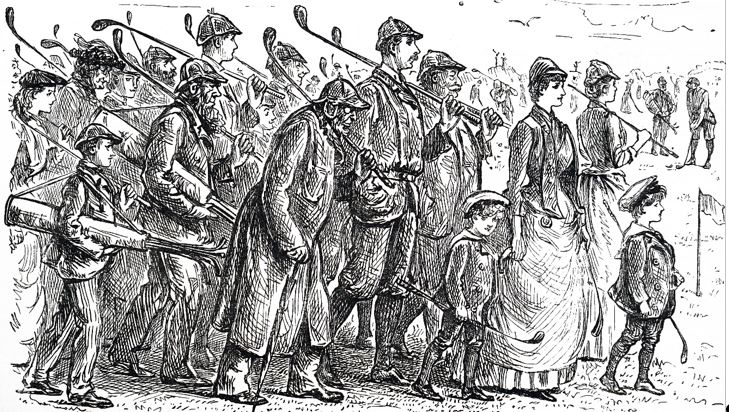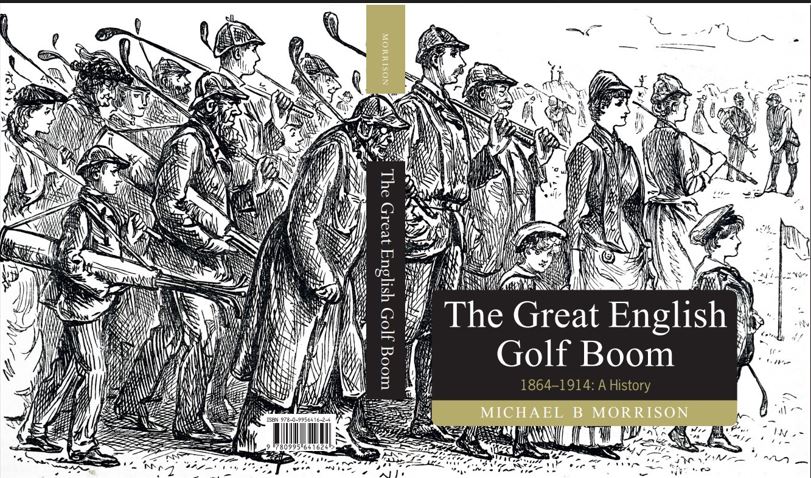Golf had been played in Scotland for centuries with virtually no interest expressed in it south of the border. By the mid-19th century it was acknowledged as the national sport of Scotland, while the English remained stubbornly unmoved by the game. Even when other sports such as football, cricket, rugby and tennis were taking off in the 1870s, golf was only played by a small minority in a scattering of places around the country.
But then it happened. Between 1890 and the commencement of the First World War, over a thousand golf clubs came into existence, nearly one new club a week for a quarter of a century. In the process, England quickly overtook Scotland as the country where most golf was played. This was not just a well-timed sprint, the resilience of these clubs has been quite remarkable – over 750 of them still exist today, accounting for nearly half of all the golf clubs in England.
Based on original research and drawing on a large array of data sources, the book presents a wholly new account of the origins, growth and spread of golf in England during this extraordinary epoch. New insights challenge some long-standing perceptions. Answers are provided to vital questions. Why did it take so long for golf to catch on? What triggered the boom? How did golf spread around the country? Who were the golfers? And, most fundamentally of all – why did this great boom happen when it did?
Mirroring the number of holes that most golf courses had in those days, the book consists of nine chapters covering the following topics:
- The sources of information used to identify all the golf clubs formed in England prior to the First World War.
- An exploration of the different paths taken in the development and growth of golf in Scotland and England during the 19th century.
- An examination of the formation of the early golf clubs in England between 1864 and 1889, during which time the game rose from obscurity to the point where it was evident that it had broader appeal.
- How the great boom in golf in England unfolded between 1890 and 1914, with a detailed chronology of events and the clubs formed during that remarkable quarter of a century.
- How golf spread, taking into consideration geographic factors such as the availability of suitable land, the development of the railways, growth in seaside resorts and suburban expansion.
- Who could afford to play golf? An economic analysis of the cost of golf in relation to other sports and with regard to the level and distribution of income in England.
- How many golfers were there? A statistical assessment of the number of golfers in England, how that changed over time, and not just of men, but women too.
- Who were the golfers? An exploration of the social classes, professions and occupations of the golfers during the boom period, and the extent to which this varied around the country and in different settings.
- Why did the boom happen when it did? The contributory factors are identified, and the extent to which these changed in importance over time. A firm set of conclusions are reached on those factors which were of relatively little importance (including some surprises) and those which were the major ones (also including several surprises).
The book finishes with an epilogue, which traces what happened subsequently to the clubs that were formed in England during the great boom. By sifting through the history of those that survived into modern times and those that did not, we can glean some insights about the resilience of these fascinating golfing institutions, and what it might tell us about the enduring popularity of golf in England to this day.
The Great English Golf Boom consists of 320 pages including over 200 illustrations, charts and maps and is published in hardback and colour.
Price: £25 + £4.50 for UK post and packing = £29.50
To make an order contact by email: Mike.Morrison57@outlook.com


